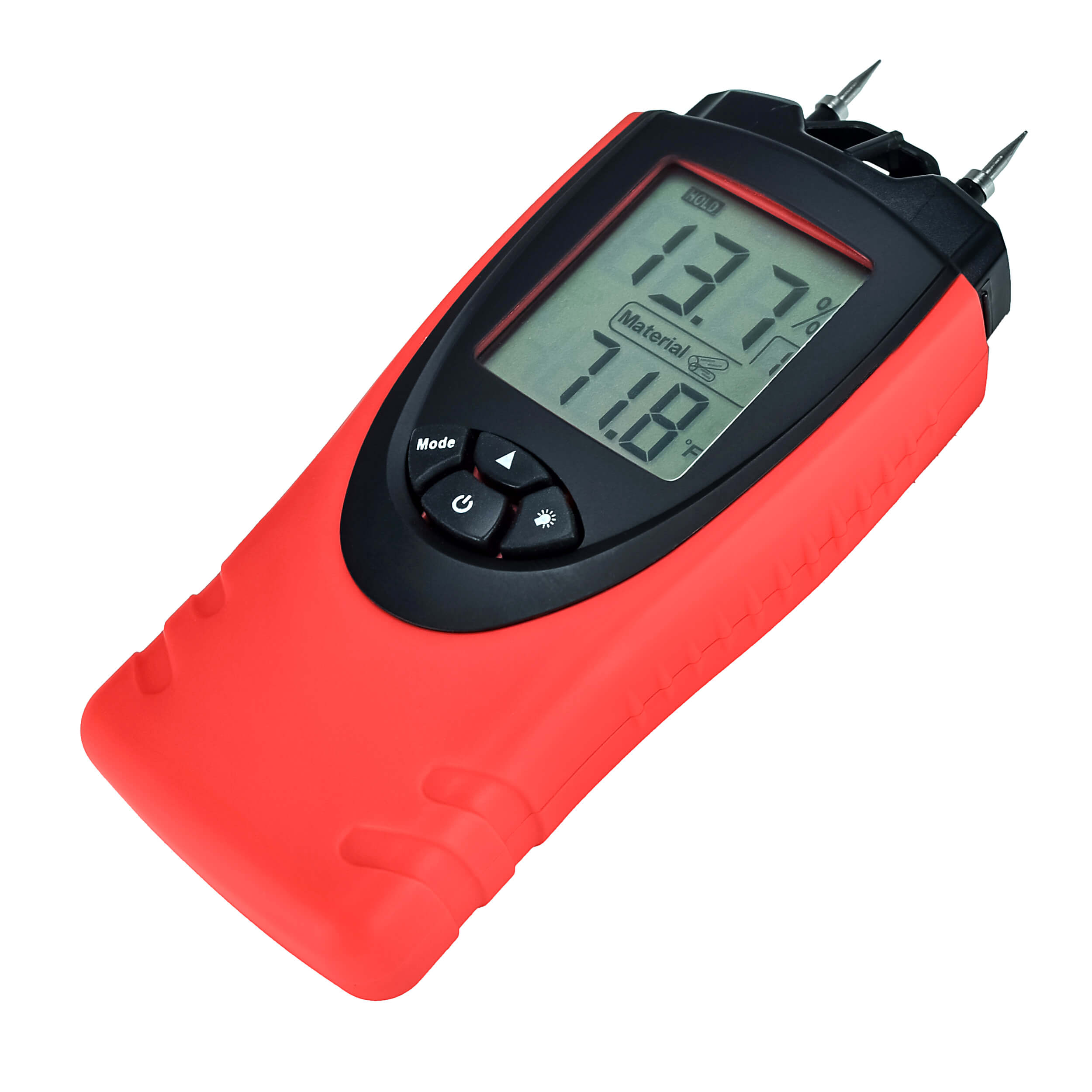Moisture Meter Reviews: Comparing the very best Models for Professional and Do It Yourself Usage
Moisture Meter Reviews: Comparing the very best Models for Professional and Do It Yourself Usage
Blog Article
Delve Into the World of Moisture Meters: Whatever You Need to Know
In the world of moisture meters exists a globe of precision and functionality that typically goes unnoticed. These devices, while relatively straightforward, hold a wide range of details that can dramatically affect various industries and applications. Recognizing just how moisture meters run, the various types available, and their varied uses can drop light on their significance in making sure quality and effectiveness. By checking out the details of wetness meters, one can uncover an important device that goes beyond plain dimension, supplying understandings that can make a substantial distinction in many fields.
Exactly How Moisture Meters Work
Moisture meters run by gauging the electrical conductivity or capacitance of materials to determine the wetness content existing. These meters are vital tools across various sectors, consisting of farming, woodworking, and construction. By using various methods such as pin-type or pinless modern technology, wetness meters supply accurate analyses that assist experts make informed choices.
Pin-type moisture meters function by placing the sharp pins right into the product being examined. The electric conductivity in between the pins is then gauged, with higher moisture degrees bring about enhanced conductivity. Moisture Meter. On the various other hand, pinless wetness meters use electro-magnetic signals to check a bigger location without creating any type of damage to the material's surface. These meters are perfect for swiftly assessing wetness levels in large locations or finished items.
Despite the technique utilized, moisture meters play an important role in protecting against concerns such as mold and mildew development, architectural damages, or item flaws brought on by excess dampness. Recognizing exactly how these meters work is vital for making sure the high quality and honesty of products in different applications.
Sorts Of Moisture Meters
Given the crucial role dampness meters play in numerous sectors, it is necessary to comprehend the various kinds readily available to professionals for properly assessing wetness levels - Moisture Meter. There are primarily two primary sorts of moisture meters: pin-type and pinless wetness meters

On the various other hand, pinless moisture meters use electromagnetic sensing unit plates to check a larger location of the product without creating any kind of damages. This type is suitable for swiftly scanning huge areas and is frequently used for flooring, walls, and ceilings. Pinless meters are practical for taking analyses on finished surface areas without leaving any visible marks.
Both kinds of dampness meters have their advantages and are selected based on the certain demands of the work handy. Understanding the distinctions between these types is vital for experts to make precise moisture evaluations.
Applications Throughout Industries
Building and construction professionals rely on wetness meters to analyze the wetness degrees in structure products like concrete, drywall, and wood, which is crucial for keeping structural honesty and preventing issues like rot or mold. The flooring market utilizes moisture meters to determine the wetness content in subfloors prior to setting up various flooring coverings, preventing pricey click now problems due to excess wetness. In the food sector, moisture meters are made use of to keep an eye on and regulate moisture degrees in products such as grains, nuts, and dried out fruits to preserve freshness and top quality.
Tips for Making Use Of Dampness Meters
Make use of the wetness meter's calibration setups to ensure accurate readings when determining the wetness web content in numerous products. In addition, make sure the meter is established to the right moisture array for the material you are measuring to acquire the most accurate outcomes.
When making use of a pin-type wetness meter, place the pins to the suitable deepness suggested for the product being examined. This guarantees that the dampness readings are drawn from the appropriate depth within the product, providing a more precise depiction of its dampness content. For pinless wetness meters, keep in mind to preserve appropriate call with the product's surface to obtain reputable analyses.
Regularly examine and change the batteries in your dampness meter to stop imprecise analyses because of low power. When not in use to lengthen its life-span and preserve its accuracy, Store the meter in a secure and completely dry place. By following these ideas, you can maximize the efficiency of your dampness meter and obtain precise dampness content dimensions throughout various products.
Maintenance and Calibration
To ensure the accuracy of moisture content dimensions, routine upkeep and calibration of the dampness meter are vital actions in its correct performance. Calibration readjusts the wetness meter to ensure that it provides dependable and regular results.
Calibration needs to be performed occasionally, specifically if the dampness meter is made use of often or in essential applications where specific measurements are needed. By keeping and adjusting the moisture meter on a regular basis, individuals can rely on the accuracy of the moisture material measurements acquired.
Conclusion

In verdict, moisture meters play an important function in various industries by accurately gauging the wetness material of materials. Recognizing exactly how these gadgets work, the different types available, and correct upkeep and calibration are necessary for obtaining trustworthy outcomes. Whether in agriculture, construction, or manufacturing, using wetness meters assists ensure quality control and efficiency in procedures.

In final thought, dampness meters play a crucial duty in different sectors by accurately measuring the dampness content of products.
Report this page